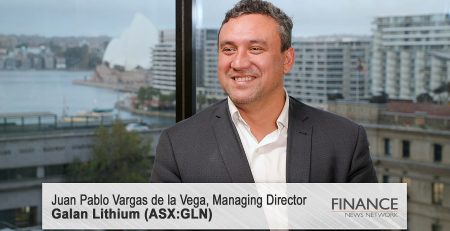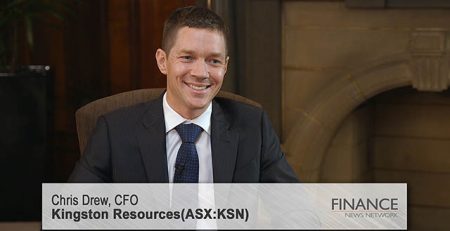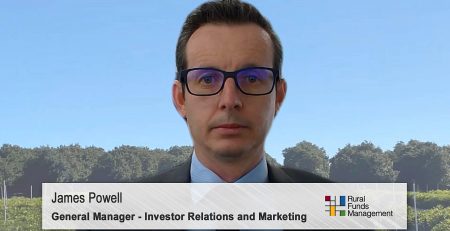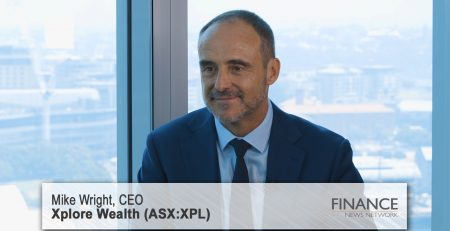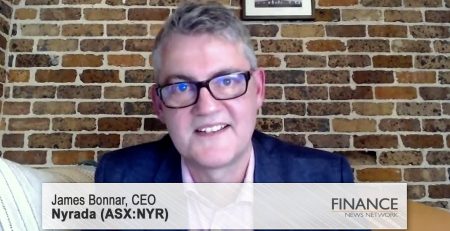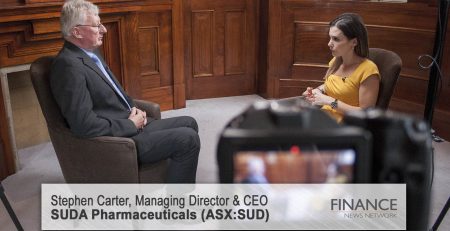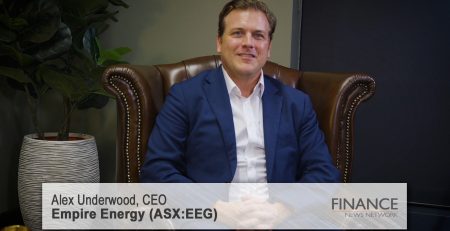Market update with Shaw and Partners, November 2023
Shaw and Partners Chief Investment Office Martin Crabb discusses when to get more bullish on equities.
Paul Sanger: So, first up to day, we have a keynote presentation from Shaw and Partners CIO Martin Crabtree. Martin, welcome back to the network. Please take it away.
Martin Crabb: Thank you for adding "tree" to my surname there, Paul. So it's "Martin Crabb", not "Crabtree".
Paul Sanger: I do apologise.
Martin Crabb: It's all good. I've been caught worse. Thank you, Paul, and welcome everyone to today's call. Good morning, all, or good afternoon depending on where you are in Australia or around the world. Yeah, so I'm the Chief Investment Officer here at Shaw and Partners. We're one of Australia's leading wealth management businesses, and if you've got some money to invest, come and talk to us and we'll help you out. So, I'm just going to spend five or 10 minutes just running through I suppose the macro environment, how we're seeing things at the moment, and just to paint a little bit of a picture of investment markets and when is the right time to put your sales up and lean into the risks on market that seem to be arriving.
So, when we are looking at framing the investment outlook for clients, we've got a process that we've followed since I've been running portfolios here at Shaw and Partners for over a decade. We run a couple of billion dollars in portfolios on behalf of clients. We make the investment decisions on their behalf. So, I'll just give you an insight as to how we're thinking about markets and how we're investing those monies as potentially some ideas and guides for investing your own money, including looking at some interesting businesses in the battery raw material space, which we think is a really interesting, emerging and exciting area of the market.
So, you're going to hear from some great companies in that space shortly, but just to set the scene, so the things we look at are growth, financial conditions and central bank positioning, and we probably also have one eye on valuation, both relative and absolute valuation. So, I'm going to just sort of step through those. It'll give you a bit of an insight into our thinking.
So, firstly on growth, are economies expanding or are they contracting, and more importantly, what is the direction? So, are they contracting faster, contracting slower, expanding faster, expanding slower? One of the measures we look at is the OECD composite leading indicator. So, it's not an investment bank, so it doesn't have any bias. It's done by the OECD, which is a supranational organisation based in Geneva. And they've been doing composite leading indicator analysis for major economies for decades. So, there's a really rich data source, which for data nerds like me is great because you can do a lot of backtesting on this composite leaning indicator and how successful it is at predicting the economy.
So, it looks at a range of measures, looking at credit, risk, equities, a whole bunch of measures and predicts where economies are going to go in six to nine months. It's not 100 per cent accurate — nothing is — but it's a good guidance as to the pulse of growth.
Now they release their numbers on the weekend, so they're relatively up-to-date as of the end of October and they show an expanding global economy. So, it's above a hundred, the indicator is above a hundred, which means that economies on net are expanding, and it's really being driven by China and to a lesser extent the United States. So, there are signs of life in the US. Some of the credit spreads are starting to come down, some financial conditions are loosening, and the Fed's talked about that. And there's also probably signs that the Fed is close to being done on interest rate rises. So, some market rates of interest, like long bond yields, for example, have started to come down. So, on the growth front, globally, things are improving.
Not the case in Australia. The Australian composite leading indicator is still negative. So, it's still below a hundred, so contracting but also still slowing down. So, it looks like the outlook for the domestic economy is continuing to soften, and that's probably not a surprise to those who follow the interest rates. And obviously interest rates have been hiked again recently. So, the picture for the domestic economy is not good. The picture for the global economy is positive, driven mostly by China, but also some signs of life in the US. So, that's a tick in the asset allocation box.
The next factor we look at is financial conditions, and I kind of referred to them a little bit already. How easy is it to get financed and how expensive is it going to cost you to get financed? So, if we roll back to 2021, when the governments were printing money, anyone could get a loan, anyone with a pulse could get a loan, and it really didn't cost you a lot of money. So, in Australia you could lock in a three- or four-year fixed-rate mortgage with a two-handle. That same loan today if you go down to the Commonwealth bank, your local branch, and ask for a loan, A, it's more difficult to get, so you need to have more income, more assets, you need to be a better quality credit to get a loan, and if you do get a loan, that same loan is probably going to cost you 6 per cent today. So, we've seen almost a tripling in interest rate cost in Australia. That's classic financial condition tightening.
We're still seeing financial conditions being very tight, but they do seem to be loosening a little bit. So, there's a number of measures that we look at for financial conditions. Probably the most famous is the Chicago Fed, who produce a financial conditions index weekly in the United States. It's got about 150 measures in it, so it's complicated, but it does show signs that financial conditions, although still tight, are starting to loosen. So, the purse strings at your local branch just starting to loosen up a bit. Less so in Australia. Financial conditions are still pretty tight in Australia, but globally they seem to be loosening. So, it's still tight, but it's starting to improve, so that's another tick.
The last thing really is looking at central bank positioning. So, every country has a central bank. Most of them are independent, with the exception of probably the Bank of China, the People's Bank of China, which is still controlled by the government, but in most countries the central bank is independent and has a dual mandate to create price stability/cut inflation and maintain full employment. So, full employment, minimum inflation is kind of the target.
Now, most central banks have that target, most of them have got a number. Australia's two to three percent inflation, the US is two. Most central banks are looking at two percent inflation, and we're not there yet. So we've got inflation coming down, but it's not at two or two to three in Australia. We're still looking at fours and fives and in some countries even higher levels of inflation.
So, the job is not done and all the central banks have been saying that. Some have been moderating their language around that, but there are still signs of inflation. And in Australia the situation's probably a little bit worse on that front than it is in the US, for example. So, wages are still going up. The latest wage data out this week saw a 4 per cent increase in wages, and that's going to keep going up because next month it's going to be 4.2. So, wages are rising and also house prices have recovered. So, we saw a sell off in house prices last year. This year they're probably up 10 per cent. That's going to flow through to higher rents and higher purchase costs for new homeowners, and they're big parts of the CPI basket.
So, the Reserve Bank's got more work to do, whether that's higher rates or whether that's rates staying higher for longer. Those conditions are not particularly positive for equity markets, and those businesses that rely on debt are going to be paying higher interest rates on that debt going forward. So, that's the cross if you like. There's two ticks, being improving financial conditions and improving growth outlook. The cross is that central banks are not yet done. So, until that box is checked as a tick, we're neutral on our asset allocation.
So, what does that mean? Typically, we run 70/30 portfolios, being 70 per cent growth assets and 30 per cent conservative assets for portfolios. We're sitting at 70/30. Last year, we were more defensive, we had more bonds and more hybrids and less equities. This year we're pretty much neutral. If we see signs that central banks are done, and inflation's down to target and central banks can start cutting rates, that's when we can become more aggressive.
Just one thing on small caps. So, small caps have underperformed large caps by a lot, and it's not just in Australia, it's a global phenomenon. There's been a flight to a very small number of very large businesses, and so the small cap relative to large cap valuation is kind of screaming a buy at the moment. So, we think there's some really good value in the small and micro cap end of the market. It is a stock pickers' area, so you need to do your research, which is a standard disclaimer. So, do your research, but companies like the ones you're going to hear about today are exactly where investors should be looking for returns going forward. So, that's a wrap for me, Paul. I might hand it back to you. Thank you.
Paul Sanger: Thanks, Martin. As always, I really appreciate your views on the market. Look, yeah, you kind of touched in there that you don't think that the Fed is quite done yet. Bringing that back into the marketplace, if you look globally, the amount of new companies that are listed this year, IPOs are record lows for the last 20 years. One of the big issues, I guess, for small caps is capital markets have also been pretty much closed. When do you think we're going to start… When do those doors start opening? Is that a first quarter next year or do you think it's more of a second quarter when we get more direction from the Fed?
Martin Crabb: Yeah, I think the consensus view, Paul, is that you wait until the first interest rate cut, and then it's all bets are on. So, every IPO will be rushing to the market because people will start investing, they'll start taking risks once they can see that interest rates are starting to come down. So, the first cut in interest rates. So, we're saying to investors that are looking to raise capital, don't wait for that moment because you'll get run over. If you need the capital now, we can probably get it for you. The pricing is obviously an issue. As you said, the markets are… But the markets, they are open. Steadfast have raised, Karoon Gas has raised, Peninsula Energy. We had three capital raisings yesterday. So, the markets are open, it's just that the pricing is probably not attractive.
But in terms of the time to flip the switch, now is a good time as any to put money to work. We should be fully invested. But in terms of going overweight and being even more positive in your outlook, I think the first interest rate cut, we'll probably see in the second half of next year.
Paul Sanger: Martin Crabb, many thanks for your time today.
Martin Crabb: Thank you.
Ends
Copyright 2023 – Finance News Network
Source: Finance News Network


